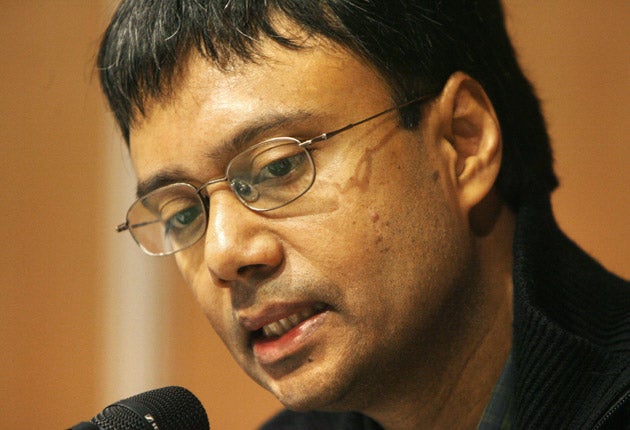Between the Ears: A Moment of Mishearing, Radio 3, Saturday<br/>The Man Who Jumped from Space, Radio 4, Wednesday
There's no such thing as silence, only the music of the spheres

Your support helps us to tell the story
From reproductive rights to climate change to Big Tech, The Independent is on the ground when the story is developing. Whether it's investigating the financials of Elon Musk's pro-Trump PAC or producing our latest documentary, 'The A Word', which shines a light on the American women fighting for reproductive rights, we know how important it is to parse out the facts from the messaging.
At such a critical moment in US history, we need reporters on the ground. Your donation allows us to keep sending journalists to speak to both sides of the story.
The Independent is trusted by Americans across the entire political spectrum. And unlike many other quality news outlets, we choose not to lock Americans out of our reporting and analysis with paywalls. We believe quality journalism should be available to everyone, paid for by those who can afford it.
Your support makes all the difference.Quiet, please. Can we have a bit of hush? Thank you.
The poet and broadcaster Ian McMillan made an interesting selection last week on Desert Island Discs. His final track – and the one he'd keep if he could have only one – was 4' 33'', John Cage's piece with no notes that's often mistakenly described as silent but which consists of all the sounds that occur during its performance. (The principal component on DID was the rumbling of McMillan's stomach.) Strictly speaking there's no such thing as silence, you might say. When Cage went into an anechoic chamber he could hear two sounds, one high, one low. The first was his nervous system, the second his circulation.
The composer/philosopher and his best-known work popped up again during last night's Between the Ears: A Moment of Mishearing. The singer, musician and novelist Amit Chaudhuri reflected on the very nature of music, sound and silence, exploring strange, enticing confluences – the "Layla" riff in a morning raga, ragas in a Hendrix blues workout, "Auld Lang Syne" in Indian hotel Muzak. It supports the idea I've always had that all music comes from the same ancient templates.
Born in Calcutta and back there now, Chaudhuri spent 16 years in London, where the silence, he says, is not merely the near-absence of noise. When he closes the door behind him it's "indescribable but unmistakable, high-pitched and narrow, bearing upon the eardrum .... It is an admonitory sound protected and even fostered by regulation and the law. It is the mad foundation of order, and I only ever hear it in the West. I am intimidated by it and then I stop hearing it". He's got a website, by the way, where you can hear clips from his album This Is Not Fusion. I think it probably is fusion, but it's definitely worth a listen.
I'd always imagined, stupidly, that ballooning would be silent. But on my one trip, drifting over the Cotswolds on an exquisite summer evening, cattle scattered far below as the burner roared. Wednesday's play, The Man Who Jumped from Space, told the extraordinary story of Operation Excelsior, in which test pilot Joseph Kittinger rose to 102,800ft in a balloon and jumped. (He had a parachute, and survived.) He'd not had much peace up there, either: one of his spacesuit gloves had malfunctioned, making his hand swell to the size of a football.
At that height, apparently, your insides want to be on the outside, and during tests in a pressure chamber Kittinger's whole suit had developed a fault. Which produced the line of the week, from a technician: "He didn't pop, did he? Tell me he didn't pop."
Join our commenting forum
Join thought-provoking conversations, follow other Independent readers and see their replies
Comments